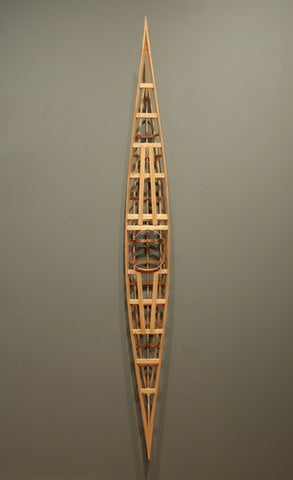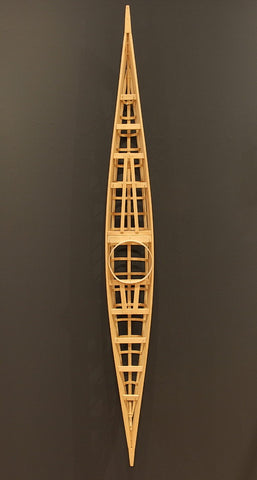Maligiaq Padilla

The lightweight, maneuverable qajaq has long been an indispensable tool and mode of transportation for the Inuit. Each boat was highly personalized to suit variations in hunting techniques, equipment, region, weather and even the season. Paddling skills are taught as soon as a child is born, when mothers would move their son’s arms in a paddling motion – the beginnings of a life long pursuit of being a hunter. The construction of a frame was highly labour intensive with only a small number of women having the skill to sew the skins on the boat, which would have to be redone every year. While the skins were drying on the frame, men would begin the process of carving and crafting all of the necessary hunting tools they would need to survive for another year on the land.
The Inuit Gallery of Vancouver currently has two model qajaq frames which have been constructed by Maligiaq Padilla, an eight time Greenlandic qajaq champion and widely considered to be a leader in the recent revival of the traditional boat handling and manufacturing skills. His model frames are elegant, sculptural works constructed entirely in the traditional manner with wood pegs and synthetic sinew. We’re also fortunate to offer two earlier model qajaqs; complete with stretched skins and a diverse array of hunting tools strapped to their decks. These examples of model qajaqs highlight the regional variations in design and allow for the appreciation of one of the guiding Inuit principles – Qanuqtuurunnarniq or the concept of being resourceful to solve problems.
« First
« Previous
Page 1 of 1
Next »
Last »
« First
« Previous
Page 1 of 1
Next »
Last »



